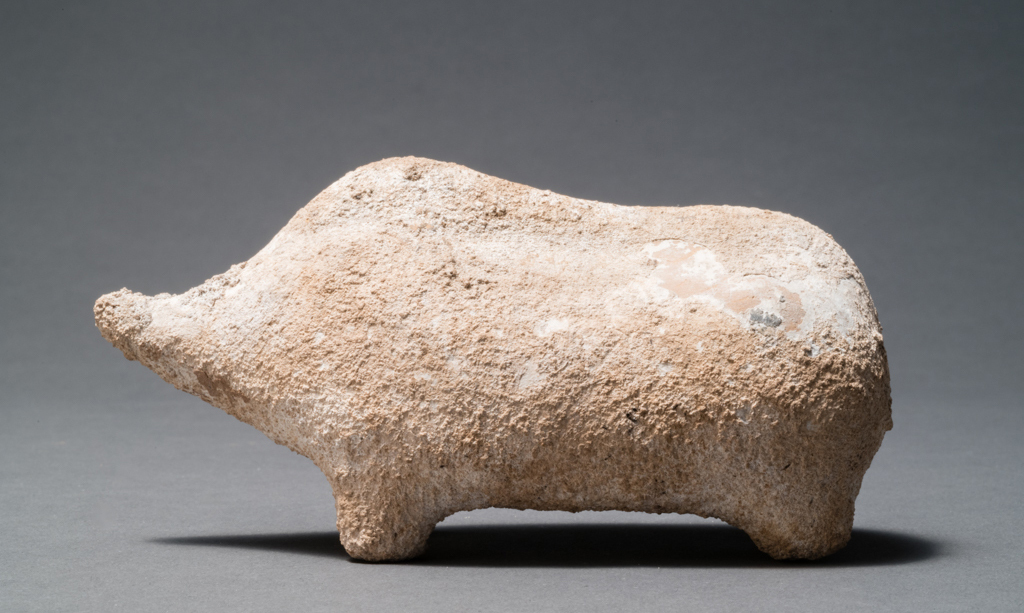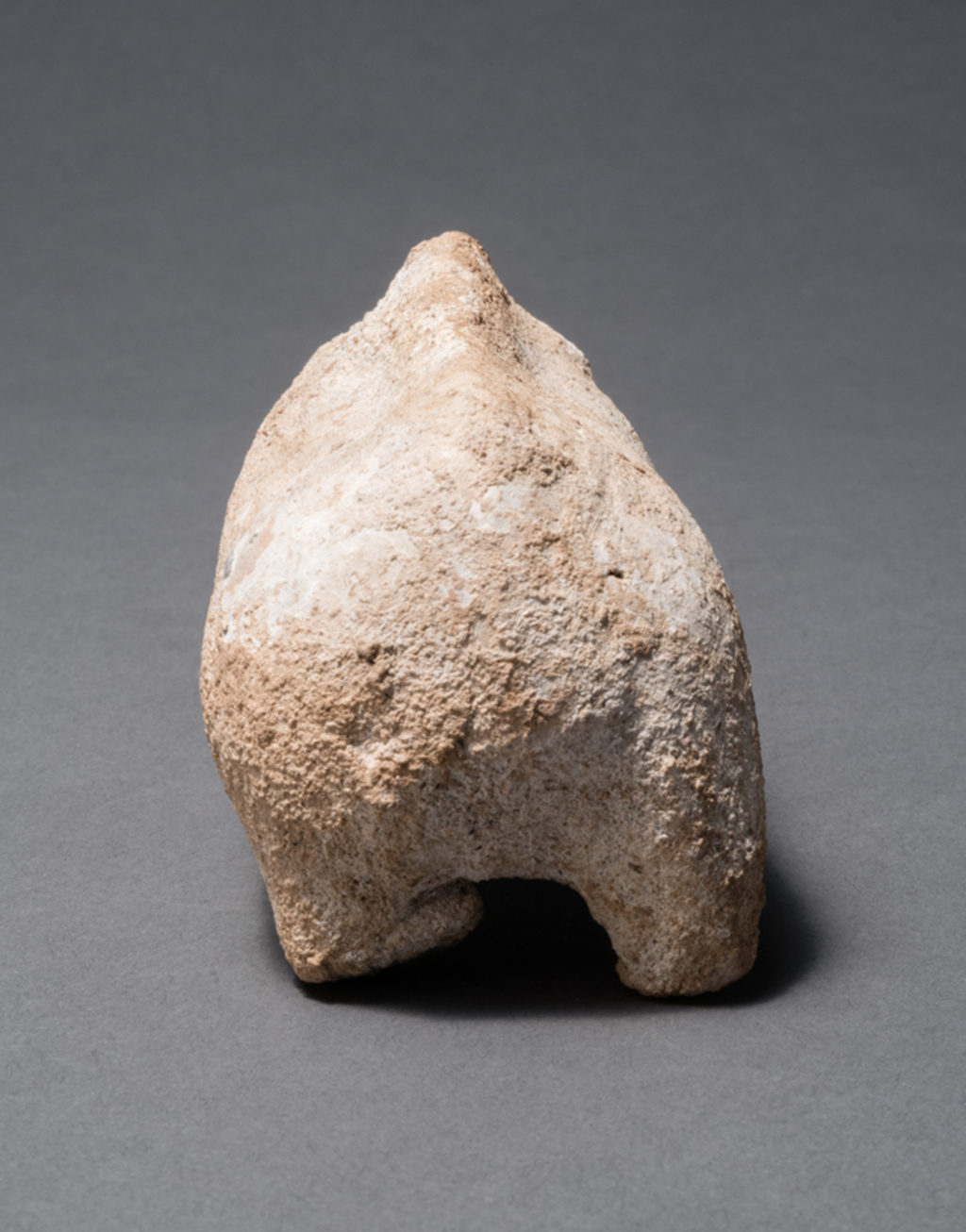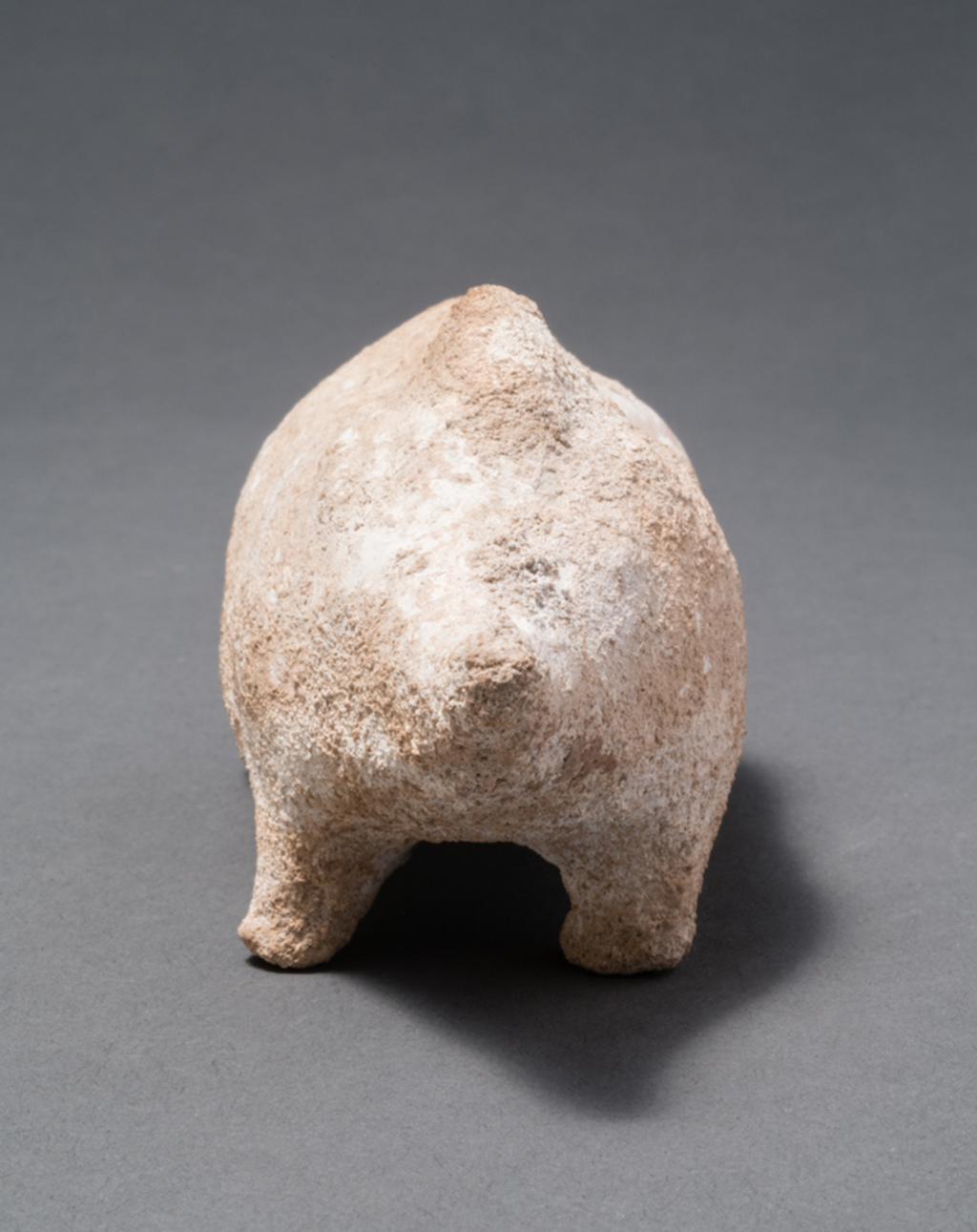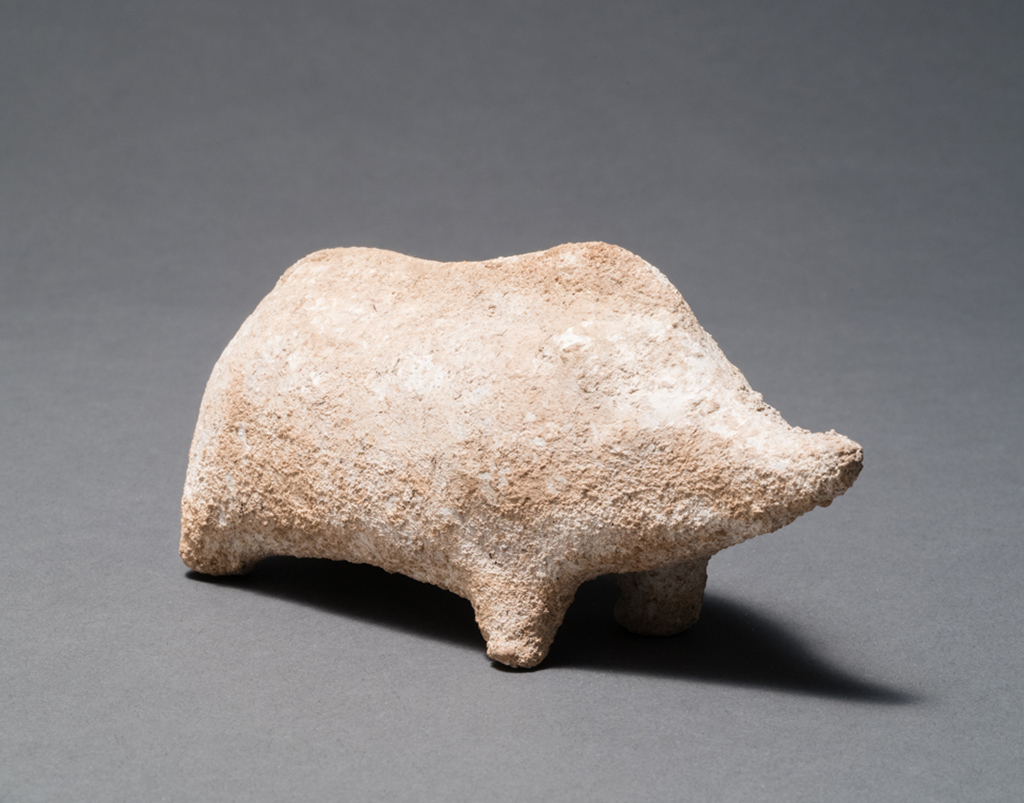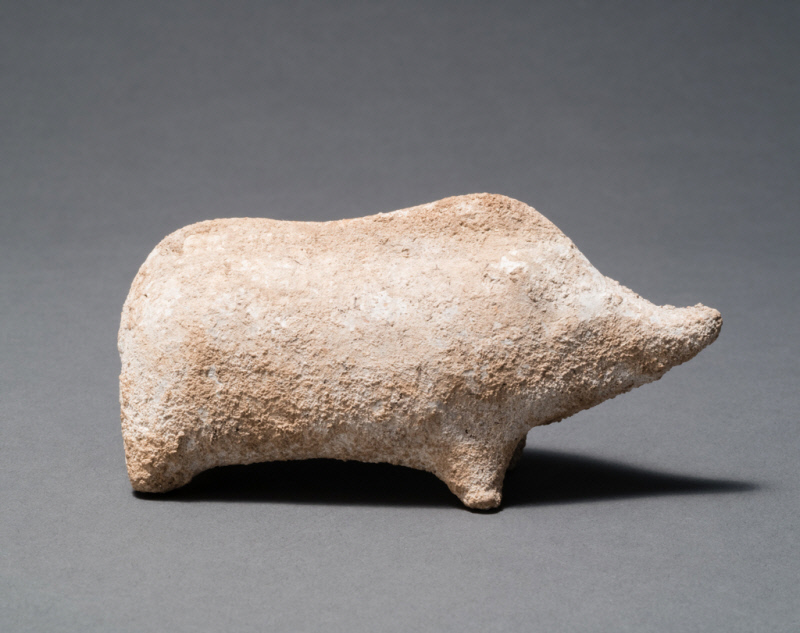Ancient Greek
Pig, 5th century BCE
Archaic
Terracotta
2 ¼ × 4 5/8 × 1 7/8 in. (5.7 × 11.7 × 4.8 cm)
3-D Object/Sculpture
Bequest of Jermayne MacAgy
1964-178 McA
Photo: Paul Hester
Image 2: Photo: Paul Hester
Image 3: Photo: Paul Hester
Image 4: Photo: Paul Hester
Image 5: Photo: Paul Hester
Image 6: Photo: Paul Hester
Image 7: Photo: Paul Hester
Learn More
Swine, both wild and domesticated, were an important food source in ancient Greece in the Bronze Age (2nd millennium BCE) and beyond. Objects made from repurposed boar tusks appear in Bronze Age contexts. Statuettes of pigs were popular across the Mediterranean, where they could serve as toys (particularly hollow ones that could make noise), votives presented in place of a sacrificial animal at a sanctuary, or funerary offerings. This object is a solid terracotta figure, rather than a rattle. Sometimes identified as a boar, this figure cannot be clearly identified as representing a male or female hog. Stylistically, the pig is similar to examples produced in Boeotia, including the upturned snout, mold-made body, and handmade legs. One buckled hind leg reveals that, prior to being fired in the kiln, the clay was not fully dry when the heavy figure was placed upright. The white slip over the surface is also common on examples from Boeotia. Additional details were probably added in paint on top of the slip, now obscured by the encrustations on the surface.
Related collections and exhibitions

